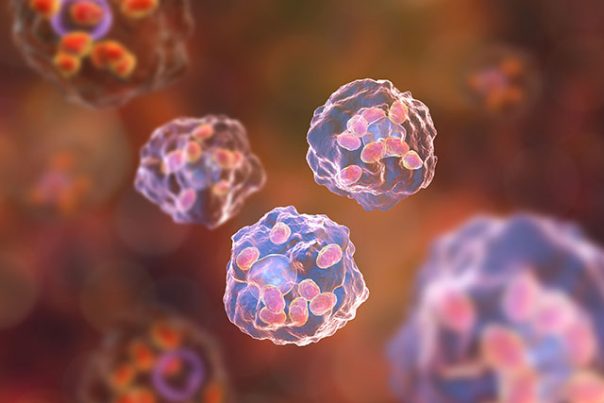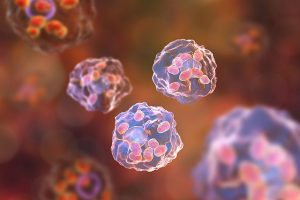
Leishmaniasis – causes, side effects and treatments at NaturalPedia.com
Thursday, May 03, 2018 by Ralph Flores
http://www.naturalpedia.com/leishmaniasis-causes-side-effects-and-treatments-at-naturalpedia-com.html

Leishmaniasis refers to certain diseases that are caused by protozoan parasites of the Leishmania species. Humans can be infected by the condition through the bite of an infected female phlebotomine sandfly, which is a tiny insect vector that only is 2–3 millimeters long.
There are three types of leishmaniasis: cutaneous, visceral or kala-azar, and mucocutaneous. In particular, cutaneous leishmaniasis causes skin sores, while visceral leishmaniasis affects internal organs such as the spleen, liver, and bone marrow.
According to estimates, there are up to 1.2 million cases of cutaneous leishmaniasis and 400,000 cases of visceral leishmaniasis around the world.

Known risk factors and symptoms of leishmaniasis
There are no predisposing factors for leishmaniasis. However, traveling to an area where the condition is found may increase the risk of transmission. Overall, there are 90 countries around the world where cases of leishmaniasis have been reported. In addition, the sandfly, the primary carrier of the parasite is located in more rural areas and in city outskirts. The risk of transmission is highest from dusk to dawn as this is the time when sand flies are most active.
Depending on the type, there are different symptoms of leishmaniasis.
In cutaneous leishmaniasis, symptoms are found where lesions are located. These may include:
- Difficulty breathing
- Skin sores, which eventually form into slow-healing ulcers
- Stuffy nose, runny nose, and nosebleeds
- Difficulty swallowing
Some cases will see the development of ulcers and a wearing away in the mouth, tongue, gums, lips, nose, and inner nose.
Systemic visceral infection, on the other hand, is characterized by the following symptoms for children:
- Coughing
- Diarrhea
- Fever
- Vomiting
For adults, the first sign of leishmaniasis is the onset of a fever, which may last for two weeks to two months. Other symptoms such as fatigue, weakness, and appetite loss also appear, with weakness increasing as the disease gets worse. Symptoms of systemic visceral leishmaniasis may also include:
- Discomfort in the abdomen
- Persistent fever
- Night sweats
- Scaly, gray, dark, ashen skin
- Thinning hair
- Weight loss
Body systems affected by leishmaniasis
The condition primarily affects the skin, but it can include other organs in visceral infections.
Food items or nutrients that may prevent or relieve leishmaniasis
One of the main factors for the progression of leishmaniasis to visceral leishmaniasis is the lack of nutrition: A diet that lacks protein, vitamin A, zinc, and iron increases a person’s risk, according to the World Health Organization (WHO). Eating food items that provide these nutrients, as well as those with antimicrobial properties such as garlic can help support the body and fight the disease.
Treatment and management options for leishmaniasis
An effective way to prevent leishmaniasis is to cover up exposed skin, especially when traveling to an area known for the condition. Cutaneous leishmaniasis usually heals on its own, without the need for medical treatment. However, visceral leishmaniasis, if left untreated, can prove to be fatal.
Where to learn more
- Noni Juice- Boosts Immune System, Fights Parasites, Helps Diabetics & Even Combats Cancer
- Ten Alternative Plants that Cleanse the Liver, Part II
- Morgellons: Biotechnology Gone Awry or Simple Psychosis?
- Avoid insect bites this outdoor season without resorting to nerve gas sprays
- Essential oils are the perfect non-toxic bug repellant
Summary
Leishmaniasis refers to certain diseases that are caused by protozoan parasites of the Leishmania species. Humans can be infected by the condition through the bite of an infected female phlebotomine sandfly, a tiny insect vector.
There are no predisposing factors for leishmaniasis. However, traveling to an area where the condition is found may increase the risk of transmission. Overall, there are 90 countries around the world where cases of leishmaniasis have been reported.
One of the main factors for the progression of leishmaniasis to visceral leishmaniasis is the lack of nutrition: A diet that lacks protein, vitamin A, zinc, and iron increases a person’s risk, according to the World Health Organization (WHO).
An effective way to prevent leishmaniasis is to cover up exposed skin, especially when traveling to an area known for the condition. Cutaneous leishmaniasis usually heals on its own, without the need for medical treatment. However, visceral leishmaniasis, if left untreated, can prove to be fatal.
Sources include:
Tagged Under: Tags: leishmaniasis





